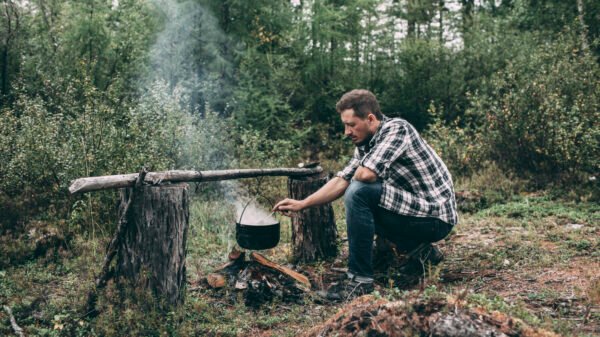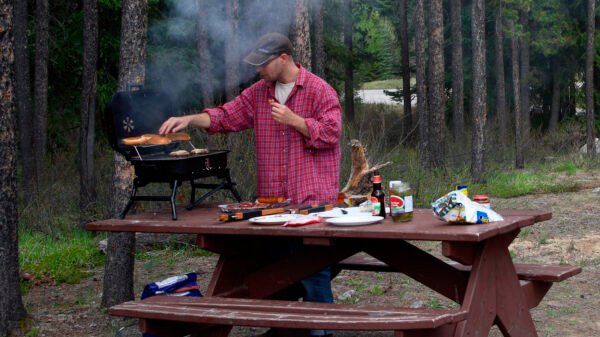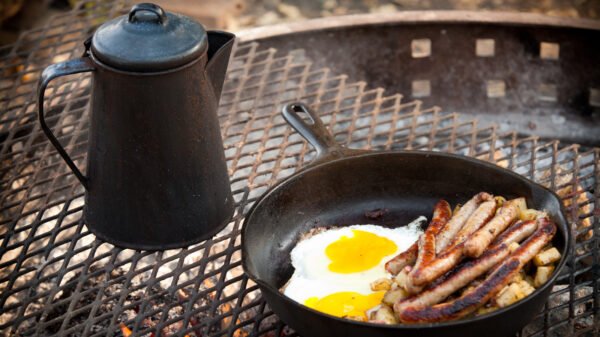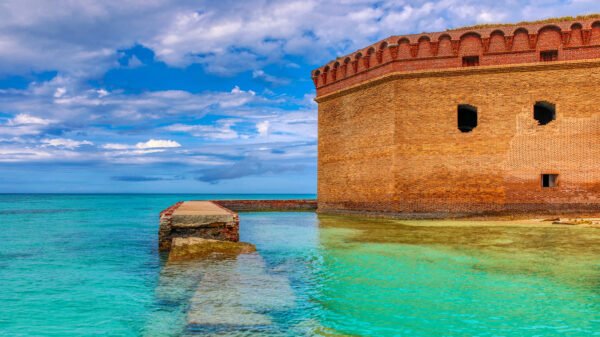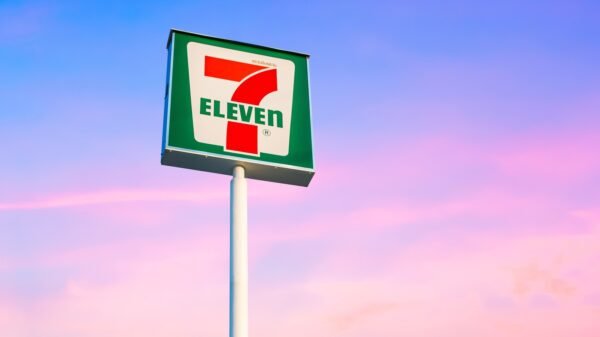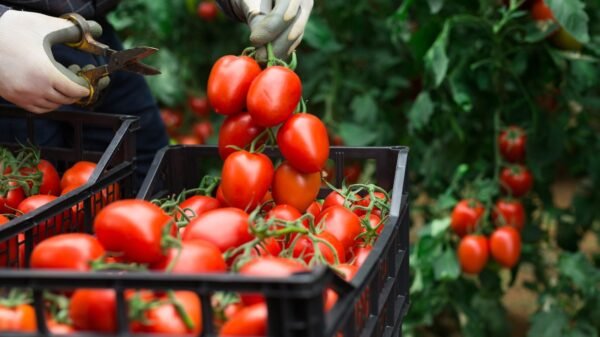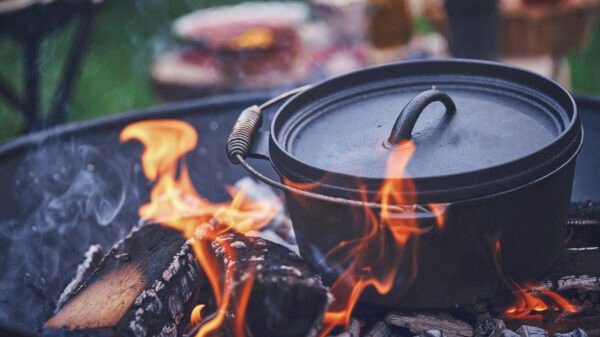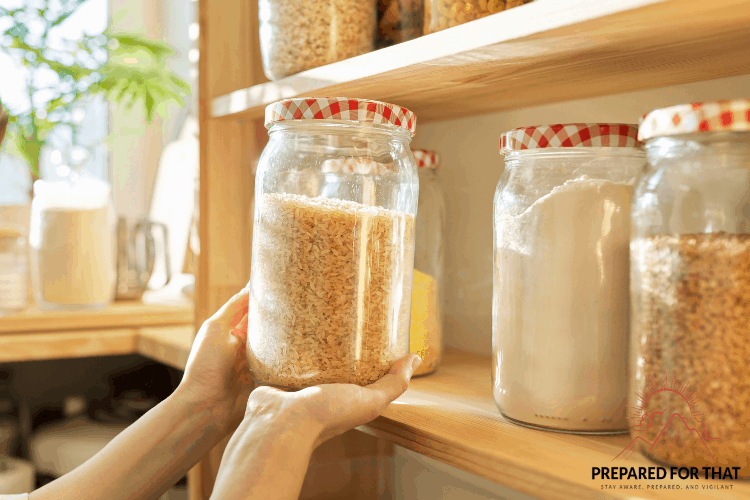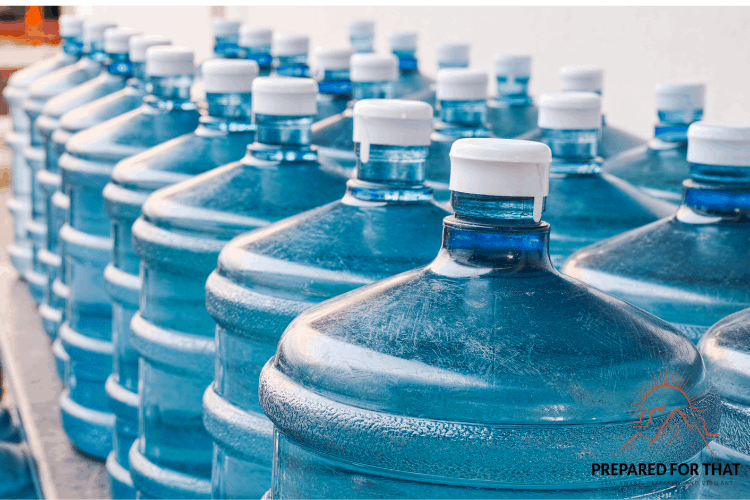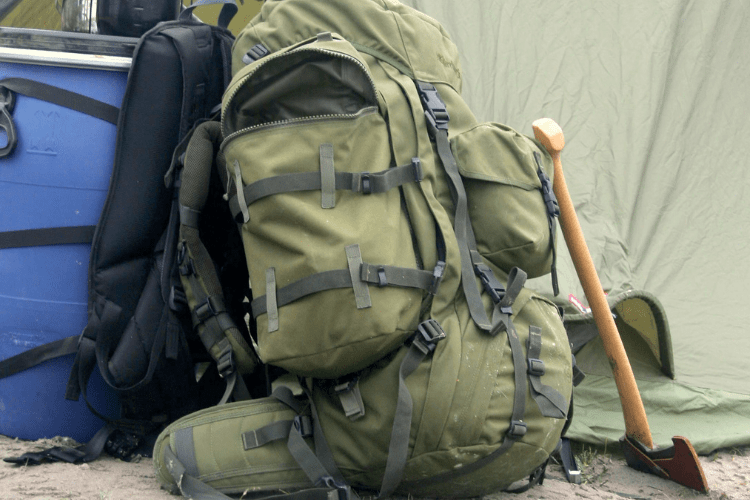Many people make the mistake of creating a food supply that is only meant to keep their stomachs from growling in hunger. This can only help one to survive a short-term disaster. However, if a crisis is prolonged, you will need a food supply that feeds and nourishes the body, not just one that keeps hunger off.
You must prepare to fuel yourself to build a new, more self-reliant kind of lifestyle. If you fail to do this, you will perhaps only be able to survive for as long as your food supply is not empty.
Besides, those who plan to take the first steps in preparing for disasters may feel a bit overwhelmed about where to begin the entire process. There is a lot of food to choose from at the grocery stores. Many websites encourage families to buy small amounts of food-related preparedness items each time they go shopping.
This is advisable because it allows you to prepare in advance over time without necessarily having to run panic purchases during a disaster.
Besides, it is common knowledge that when disaster strikes, there will be shortages, essential items will run out, or their prices might increase exponentially. One of the tools you will need for planning in such situations is the food storage calculator, which can help you understand how much food your family will need for a given emergency.
Simultaneously, the food storage calculation can be printed out and used as an inventory list to help you keep track of what preparedness supplies you need. These essential food pantry rules should be considered before shopping to make the most of your emergency food supply.
The Latter-Day Saints created this calculator so that people, even those who aren’t associated with the LDS church or any church in general, can help figure out what they need based on the critical building blocks diet that must always be utilized for survival needs. It is a handy tool. Please note that the water supply is for 14 days as it is impractical to store a full year of water supply.
You can visit Calculate Your Food Storage Needs to access a food storage calculator to help determine what your family would need for an entire year.
2-Week Food Supply List: Daily Calorie Requirements
In a disaster, the ultimate goal is to ensure you fend off malnutrition. You might be facing a tough time ahead, but it is equally essential to ensure that you do not starve to death. Proper nutrition will keep you alive, strong, and active enough to support yourself, your family, or those under your care.
Because of this, you will need to ensure that you have the right kind of food that will support your nutritional needs. You will need to stock up on foods that provide essential nutrients for maintaining body functions, carbohydrates and proteins, and fats for energy.
On the same note, we have to highlight again the fact that your food needs to contain as little salt as possible because the more salt you have in your diet, the higher your thirst for water will be, and you might be in a situation where getting a proper water supply might be a challenge.
Several food items can serve more than one purpose, helping with finances and saving precious space in the food storage pantry. Such items include pasta, oats, wheat, rice, and beans.
High-Energy Snacks
High-energy snacks are good for boosting your energy, particularly in emergencies. Therefore, eating snacks high in complex proteins and carbohydrates will be the best way to ensure you stay stronger. High-energy snacks such as peanut butter, nuts, granola bars, crackers, and trail mix can be stored for up to one year and help keep energy levels and spirits high in an emergency.
Proteins
Protein is an essential ingredient in our diet, and thus it cannot be excluded from the diet during times of survival. A good source of protein is canned meat, which can help you sustain energy levels. Besides, meats such as ham, chicken, tuna, and spam are also excellent protein sources for the food pantry.
Did you know that the oil in canned meat can be used as an emergency candle? Some other accessible sources of proteins are beans and rice. Together, they make a complete protein mix, providing all the amino acids you need to survive.
Don’t Forget The Basics Emergency Food Supplies
Sometimes people forget the essentials, such as flour, cooking oil, cornmeal, sugar, salt, spices, baking powder, baking soda, and vinegar. These should not be overlooked. If these are in your kitchen, they should also be in your emergency food supply.
Even though during an emergency, you might only use them from time to time or not as often as you usually do, the most crucial thing that you have to understand is that when it comes to emergencies, you take any chance you get as a golden chance, and utilize it.
Convenience and Variety
Many parents know that boxed dinners can be quite a lifesaver when you run out of time. Thus, having some pre-packaged dinners and meals that you can grab during emergencies will help in acclimatizing you to cooking in a grid-down situation and also provide some comfort at the same time.
Variety, in all life situations, brings forth pleasure. This is also the case in the food pantry, which prevents the monotony of eating the same type of food all the time. Again, it is essential to mention that having well-rounded food storage in a pantry reduces culinary boredom and provides a balanced diet. Simultaneously, stocking up on various spices will enhance your pantry’s appeal.
The fascinating thing about planning for your pantry is that you must try as much as possible to get a good variety in the store. Lack of variety will quickly breed boredom, making it harder for you to eat the food you need to survive. This is particularly so for your kids. Anything that will affect your kids’ appetite needs to be dealt with appropriately, mainly because kids, unlike adults, might not understand the dire extent of the situation.
Finding Comfort in The Little Things
You must stock some comfort food items that pleasure the family. Some practical examples include sweet cereals, popcorn, juice boxes, hard candy, pickles, pudding, applesauce, and cookies. These could be a great way of providing a bit of normalcy to any emergency one may face.
Besides, some snacks are also an excellent way to boost your energy. Therefore, you must try and make sure that you get just the right kind of snacks, ones that will keep away boredom and keep you healthy and strong.
Backing Up Your Backup Supply
It is undoubtedly true that compressed food bars are lightweight. They taste good and are nutritious. You can include food bars in your pantry as a backup to your existing food supply. These could provide you peace of mind by knowing that you have an alternative to turn to if you run out of your regular food supplies.
Besides, these are great alternatives to your 72-hour bag or even bug-out vehicle, that is, the bag of items that you would use to survive for the first 72 hours in an emergency and the vehicle that you would be using when driving out of some space where a disaster has occurred in.
You need to understand the different types of bars with which you can practice survival skills. However, these should not be the only items in your pantry at any given time. They should only act as a backup during emergencies.
Water Supply
The importance of water for continued survival cannot be overstated. You must have water for you and your family to survive. It is prudent to have at least a two-week supply of water at hand. Also, a water filtration device that can be relied upon for prolonged disasters can be beneficial.
Rotating and Resupplying
This is one of the essential practices that you will need to learn when running a food pantry. It is good to realize that all the items brought to the food storage need to be used, rotated, and resupplied. This is the best way to have the freshest foods in a disaster.
An inventory check must be done every six months to ensure that canned goods, preserves, and other storage items are all within their respective expiration dates. When organizing the food reserves, you should place the item with the earliest expiration date in the front so it can be used first. By doing this, you can incorporate the accounting policy of FIFO (first in, first out) in the operation of your food pantry.
To some, prepping is a passion; for others, it is one of the most efficient ways of keeping their families as safe as possible, especially in emergencies. If kept in mind when purchasing food supplies, the above considerations will provide your family with a well-rounded food pantry stocked with a wide-ranging food supply while assisting in promoting a healthy diet for all in times of disaster.
Sources:
https://www.tactical.com/the-ultimate-guide-on-how-to-build-a-prepper-pantry/
https://www.therevolutionblog.com/prepper-pantry/
https://www.askaprepper.com/15-rules-building-prepper-pantry/
https://www.google.com/books/edition/Be_a_Prepper/NkttjwEACAAJ?hl=en


